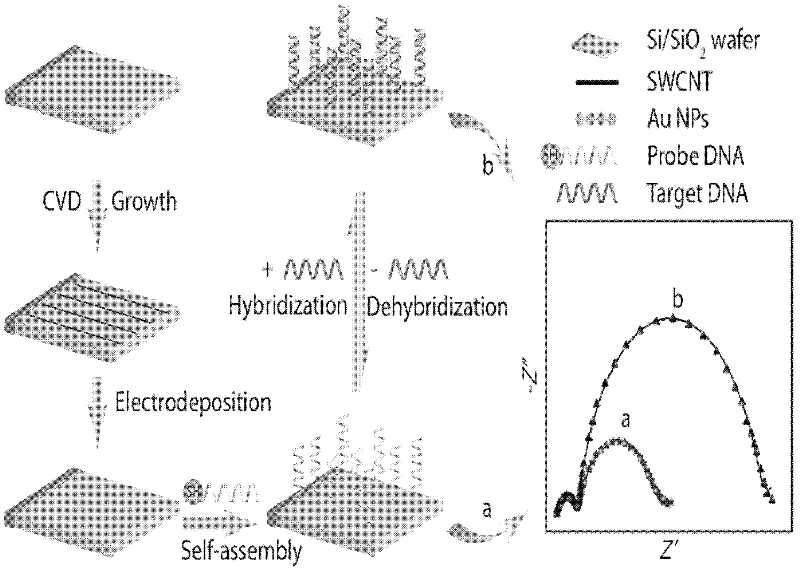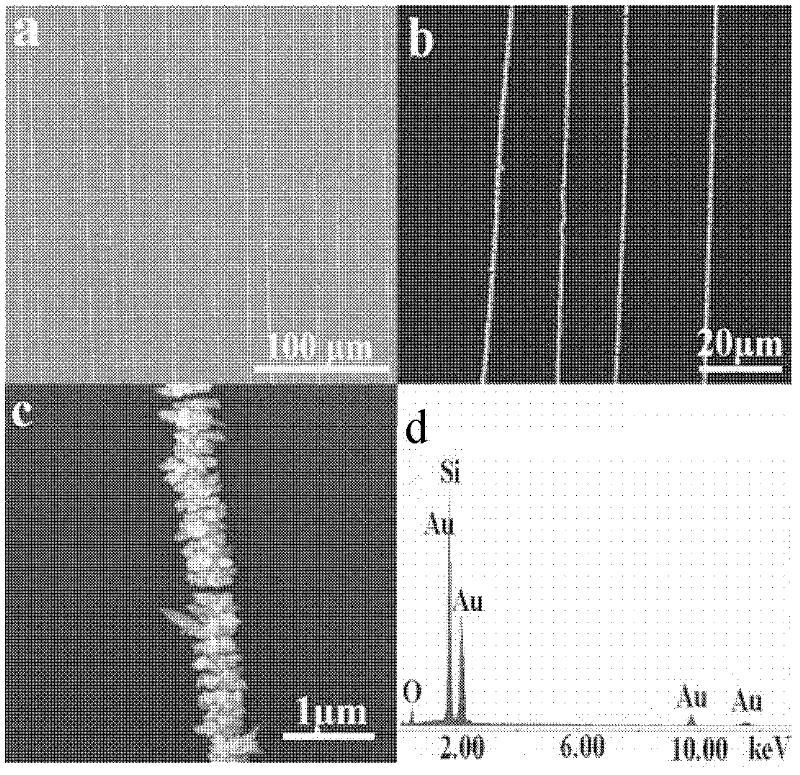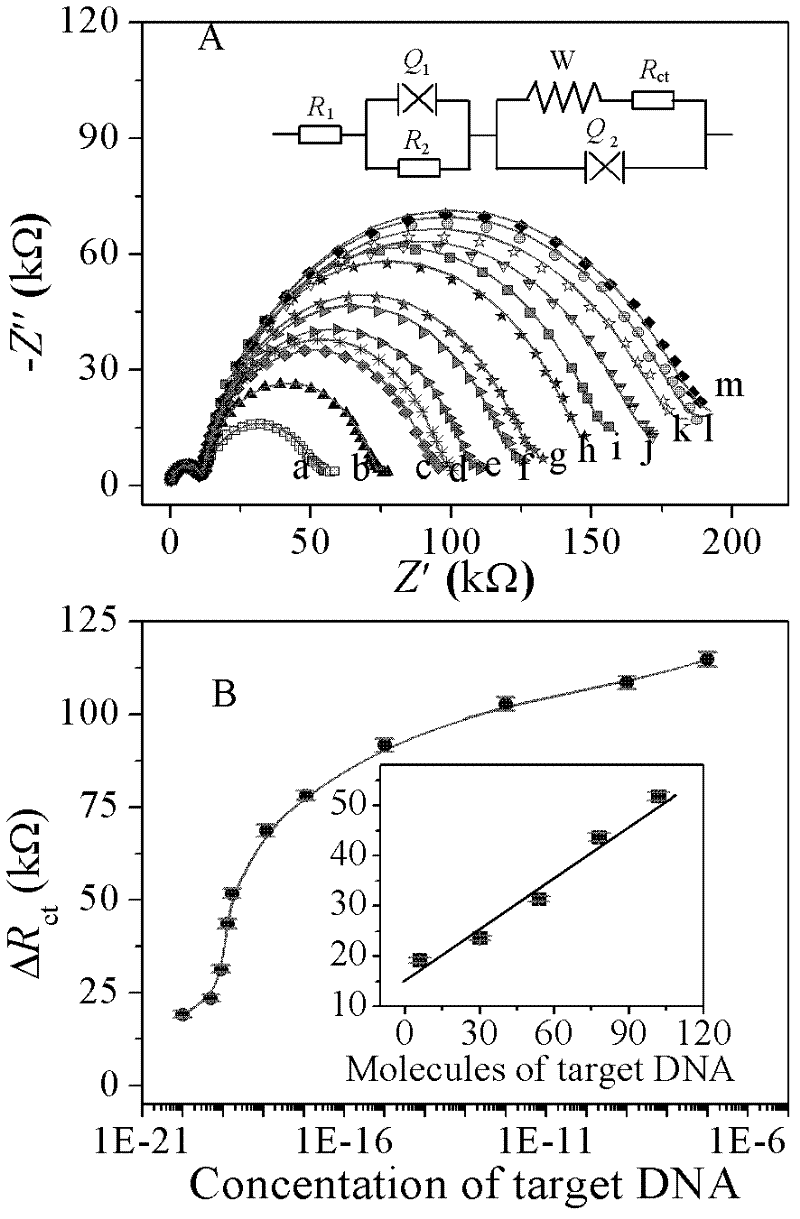Single-wall carbon nano tube-based ultrasensitive deoxyribonucleic acid (DNA) biosensor and preparation method and application thereof
A technology of single-walled carbon nanotubes and biosensors, applied in the field of bioelectrochemical sensors and their preparation, can solve the problems of increasing costs and limiting the scope of application, and achieve the prevention of interference in signal conduction, better surface area, and strong discrimination of single bases Effects of Mismatched Capabilities
- Summary
- Abstract
- Description
- Claims
- Application Information
AI Technical Summary
Problems solved by technology
Method used
Image
Examples
Embodiment 1
[0046] (1) Preparation of SWCNTs-Au electrodes
[0047] Such as figure 1 As shown, the chemical vapor deposition (CVD) method is used. First, the temperature of the quartz tube is rapidly raised to 1000 °C in a heating furnace, and then a mixed gas of ethanol / helium is introduced, and Fe / Mo nanoparticles are used as catalysts. The high-temperature reduction reaction is carried out for 15 minutes. Single-walled carbon nanotube arrays were obtained by in situ growth on a silicon substrate. Then connect the electrode with a copper wire as a working electrode, 10ml (1mM) of HAuCl 4 As a gold source, use Pt wire as the counter electrode, use the method of constant potential, and adjust the voltage to -0.5V. After depositing with the two-electrode system for 10s, turn off the power, rinse with MilliQ water, and dry the electrode surface with ear washing balls. Get SWCNTs-Au electrode.
[0048] (2) Preparation and hybridization of sensing electrodes
[0049] The DNA sequence sel...
Embodiment 2
[0056] Obtain the sensing electrode according to the method in Example 1, put it into the matching DNA solution with a concentration of 0.1 μM, hybridize at 45°C for 10 h to form SWCNTs-Au-dsDNA, take it out and rinse the electrode surface repeatedly with MilliQ water and Tris-HCl buffer solution, Wash away unhybridized DNA non-specifically adsorbed on the electrode surface. The electrochemical impedance curve was recorded according to the method in Example 1, and the results were consistent with Example 1.
Embodiment 3
[0058] Obtain the sensing electrode according to the method in Example 1, put it into the matching DNA solution with a concentration of 1nM, hybridize at 45°C for 2h to form SWCNTs-Au-dsDNA, take it out and wash the electrode surface repeatedly with MilliQ water and Tris-HCl buffer solution , to wash away unhybridized DNA non-specifically adsorbed on the electrode surface. Record the electrochemical impedance curve by the method in embodiment 1 (as figure 2 Curve l in A).
PUM
| Property | Measurement | Unit |
|---|---|---|
| Length | aaaaa | aaaaa |
Abstract
Description
Claims
Application Information
 Login to View More
Login to View More - R&D
- Intellectual Property
- Life Sciences
- Materials
- Tech Scout
- Unparalleled Data Quality
- Higher Quality Content
- 60% Fewer Hallucinations
Browse by: Latest US Patents, China's latest patents, Technical Efficacy Thesaurus, Application Domain, Technology Topic, Popular Technical Reports.
© 2025 PatSnap. All rights reserved.Legal|Privacy policy|Modern Slavery Act Transparency Statement|Sitemap|About US| Contact US: help@patsnap.com



